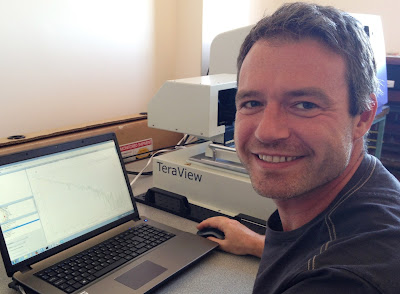New Imaging Spectroscopy Facility at UWA

Professor Vincent Wallace
The University of Western Australia’s Physics Department boasts a new imaging and spectroscopy facility that has the potential to transform crude oil production and refinery processes.
Cutting edge technology is a priority for oil and gas companies who face an increasingly competitive market and are looking for an edge that makes them stand out against the rest.
At UWA our scientists are working with new technologies that will revolutionise the industry and add value to a company’s bottom line through improved productivity.
One such technology is a state-of-the-art terahertz (THz) imaging and spectroscopy system, the TeraPulse 4000, that has just been installed in the School of Physics and is the first of its kind in WA.
UWA’s Associate Professor Vincent Wallace is the co-inventor on several patents relating to THz technologies and he expands on why this technology is a novel tool for industry:
“For the oil and gas, and resources industry, THz spectroscopy provides the capability to understand numerous problems like water content and crude oil viscosity.”
“THz spectroscopy is ideally suited for probing intermolecular interactions and low-energy vibrational, rotational and librational modes of various components of crude oil and the aggregation of certain compounds like asphaltenes.”
“Asphaltenes are heavy, polar aromatic molecules found in crude oils that due to aggregation increases its viscosity and thus make it more difficult to extract. Typically, solvents like toluene or benzene are used to dissolve these compounds but there is a lack of understanding as to why they form in the first place.”
“It is this type of problem that I am looking to engage with industry and solve, using this cutting edge technology. By understanding why asphatelenes form, it will provide us the key to removing them prior to or during extraction and potentially transforming production quality.”
Full article here.